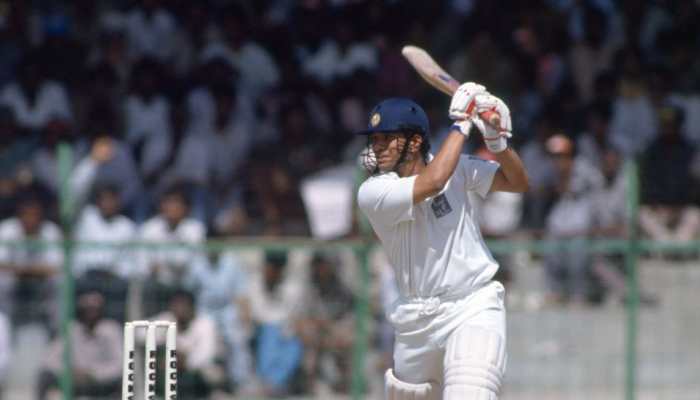'No Touch' Rule At Kashi Vishwanath Temple In Varanasi, Police Personnel Deployed In Saffron Attire
The Varanasi Police's decision to implement the 'no touch rule' at the revered Kashi temple has sparked a debate, drawing both criticism and praise from various quarters.
Trending Photos
)
VARANASI: The Kashi Vishwanath Temple, a revered site for millions of Hindu devotees, has become the centre of attention following the implementation of a controversial ''no touch'' rule directive issued by the Varanasi Commissioner of Police. This directive, which involves deploying officers adorned in saffron attire within the temple premises, has sparked a debate, drawing both criticism and praise from various quarters. The decision, unveiled on Tuesday, saw a visual transformation within the temple complex on Wednesday, with a select few officers exchanging their khaki uniforms for traditional kurta-dhotis in saffron hues. This move has elicited diverse reactions from devotees and observers, reflecting a spectrum of opinions on its implications and motivations.
Details Of The Directive
According to the directive, male officers will attire themselves in red or saffron dhotis and kurtas, complemented by an ''angvastram'' and tilak, mirroring the appearance of priests. Female officers, on the other hand, will don salwar kurtas in saffron and red. Before deployment, these officers will undergo a three-day training program focused on enhancing communication skills with devotees, aimed at fostering a more cordial interaction.
What Is The Objective?
Commissioner of Police Mohit Agrawal emphasized the imperative of addressing crowd management concerns, particularly during peak hours of darshan. Long queues often lead to frustration among devotees, prompting the implementation of a "no touch" policy for crowd control. Ropes will be utilized instead of physical intervention to guide devotees, promoting a friendlier police image and ensuring a smoother flow of visitors within the temple premises.
Controversy Surrounding The Directive
While some have lauded the initiative as a means to enhance the devotee experience, others have expressed scepticism, citing concerns over potential political undertones and religious sensitivities. The sight of policemen dressed in saffron amidst devotees has fuelled speculation, with some questioning its connection to election campaigning. Condemning the move, former UP CM and Samajwadi Party chief Akhilesh Yadav said the decision to allow police officers to dress in anything other than their uniforms poses a big security risk. "According to which 'police manual' is it correct for policemen to be dressed as priests? Those who give such orders should be suspended. If tomorrow any 'thag' (fraudster) takes advantage of this and loots the innocent public, then what will the UP government and administration answer? Condemnable!" Akhilesh Yadav wrote on X.
पुजारी के वेश में पुलिसकर्मियों का होना किस ‘पुलिस मैन्युअल’ के हिसाब से सही है? इस तरह का आदेश देनेवालों को निलंबित किया जाए। कल को इसका लाभ उठाकर कोई भी ठग भोली-भाली जनता को लूटेगा तो उप्र शासन-प्रशासन क्या जवाब देगा।
निंदनीय! pic.twitter.com/BQUFmb7xAA — Akhilesh Yadav (@yadavakhilesh) April 11, 2024
Former SP minister Manoj Rai also criticized the move, denouncing it as disrespectful to religious sentiments and urging the Election Commission to intervene. Rai underscored the sanctity of saffron attire, cautioning against its politicization.
What Do The Astrologers Say?
In the sanctum sanctorum of the Kashi Vishwanath Temple, the police personnel adorned in attire resembling that of priests have been deemed appropriate by astrologer Pandit Shashishekhar Tripathi. According to astrology, the police force embodies the authority of the planet Mars, associated with fierce elements. Conversely, the temple and its atmosphere represent the representation of the divine teacher, Brihaspati. The connection of the teacher is with religion and spirituality. The presence of police personnel dressed as priests will diminish the influence of Mars and enhance the influence of the teacher element. This is favorable. In places of worship, the dominance of the teacher planet should be higher.
On the inaugural day post-directive, a mix of saffron-clad and khaki-uniformed policemen were observed within the temple complex. It remains unclear whether the officers donning saffron had undergone the prescribed training, adding further complexity to the ongoing controversy.
(Disclaimer: The information provided here is based on general assumptions and knowledge. ZEE NEWS does not endorse it.)
Stay informed on all the latest news, real-time breaking news updates, and follow all the important headlines in india news and world News on Zee News.
Live Tv







)
)
)
)
)
)
)
)
)
)
